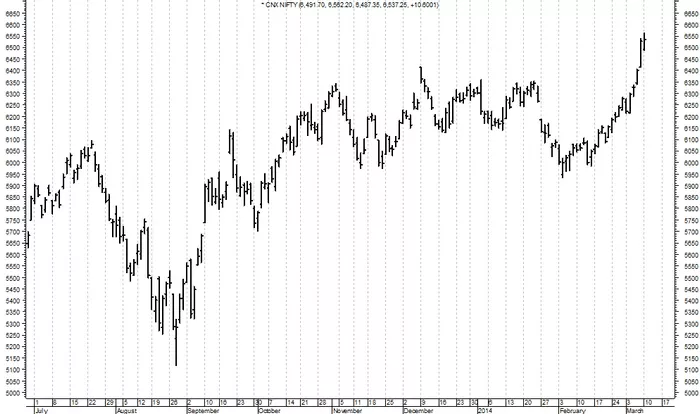Investing in the stock market can be a rewarding endeavor. However, relying solely on stock picking as an investment strategy carries significant risks. This article delves into 6 major risks associated with a strategy based solely on picking stocks, providing a comprehensive overview to help investors make informed decisions.
1. Lack of Diversification
Concentration Risk
When investors focus solely on picking individual stocks, they often end up with a portfolio that lacks diversification. This concentration risk means that the performance of the portfolio is heavily dependent on a few stocks. If these stocks underperform, the entire portfolio suffers.
Market Volatility
Stock prices can be highly volatile due to various factors such as economic conditions, political events, and market sentiment. A lack of diversification means that the investor is more exposed to the fluctuations of individual stocks, leading to increased volatility in their portfolio.
Sector-Specific Risks
Investors who pick stocks may inadvertently concentrate their investments in certain sectors. Sector-specific risks, such as regulatory changes, technological disruptions, or economic downturns, can have a significant impact on these concentrated investments.
2. Difficulty in Predicting Market Movements
Market Timing Challenges
Successfully picking stocks often involves attempting to time the market, which is notoriously difficult. Even experienced investors and professionals struggle to consistently predict market movements. The unpredictable nature of the market makes timing investments accurately a formidable challenge.
Behavioral Biases
Investors are prone to behavioral biases, such as overconfidence, anchoring, and loss aversion, which can affect their stock-picking decisions. These biases can lead to poor investment choices, as investors might hold onto losing stocks for too long or sell winning stocks too early.
Economic and Political Uncertainty
Global economic and political events can have a profound impact on the stock market. Predicting these events and their effects on individual stocks is highly challenging, adding another layer of uncertainty to a stock-picking strategy.
See Also: 6 Reasons Consumer Staples Stocks Are Falling
3. High Transaction Costs
Frequent Trading
A stock-picking strategy often involves frequent buying and selling of stocks. Each transaction incurs costs, including brokerage fees, taxes, and spreads. These costs can quickly add up and erode investment returns.
Short-Term Capital Gains Taxes
Frequent trading can result in short-term capital gains, which are taxed at a higher rate compared to long-term capital gains. This higher tax rate reduces the overall returns on investments, making a stock-picking strategy less efficient.
Hidden Costs
In addition to explicit costs, there are hidden costs associated with frequent trading, such as the bid-ask spread and market impact costs. These hidden costs can further reduce the returns on a stock-picking strategy.
4. Time-Intensive and Requires Expertise
Research and Analysis
Picking individual stocks requires extensive research and analysis. Investors need to thoroughly understand the companies they are investing in, including their financial health, competitive position, and growth prospects. This level of analysis is time-consuming and requires a significant amount of expertise.
Constant Monitoring
Stock-picking strategies require constant monitoring of the portfolio. Investors need to stay updated on news and events that could impact their stocks. This constant vigilance can be overwhelming and is not feasible for many individual investors.
Access to Information
Institutional investors often have access to information and resources that individual investors do not. This information asymmetry puts individual investors at a disadvantage when it comes to picking stocks, as they may not have the same level of insight into market movements and company performance.
5. Emotional Decision-Making
Fear and Greed
Emotional decision-making is a common pitfall for investors. The fear of losing money can lead to panic selling during market downturns, while greed can lead to overconfidence and excessive risk-taking. Both fear and greed can result in suboptimal investment decisions.
Confirmation Bias
Investors may also fall victim to confirmation bias, where they seek out information that supports their existing beliefs and ignore information that contradicts them. This bias can lead to a skewed perception of a stock’s potential and result in poor investment choices.
Herd Mentality
Herd mentality can influence investors to follow the crowd, buying stocks when prices are high and selling when prices are low. This behavior is often driven by emotional reactions rather than rational analysis, leading to poor investment outcomes.
6. Overestimating Stock-Picking Ability
Performance Misjudgment
Many investors overestimate their ability to pick winning stocks. Studies have shown that even professional fund managers often struggle to consistently outperform the market. Overconfidence in stock-picking ability can lead to excessive risk-taking and disappointing returns.
Survivorship Bias
Survivorship bias can skew perceptions of stock-picking success. Investors may focus on the success stories of stocks that have performed well, while ignoring the many stocks that have underperformed or failed. This bias can create an unrealistic expectation of success.
Randomness and Luck
The performance of individual stocks can be influenced by factors beyond an investor’s control, such as random events or sheer luck. Relying solely on stock picking increases the risk of being affected by these unpredictable factors.
Conclusion
While picking stocks can be an exciting and potentially lucrative investment strategy, it is fraught with risks. Lack of diversification, difficulty in predicting market movements, high transaction costs, the need for significant expertise, emotional decision-making, and overestimating stock-picking ability all contribute to the inherent risks of this approach. Investors should carefully consider these risks and explore diversified investment strategies, such as index funds or ETFs, to mitigate the challenges associated with a stock-picking strategy. By understanding and addressing these risks, investors can make more informed and prudent investment decisions.
Related topics:































